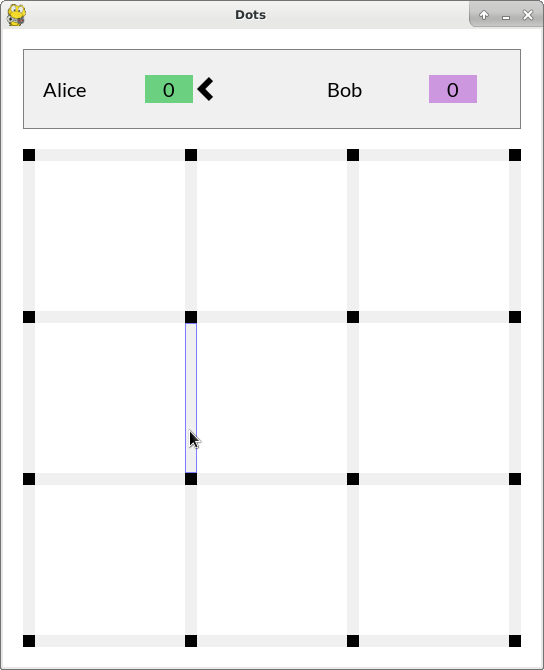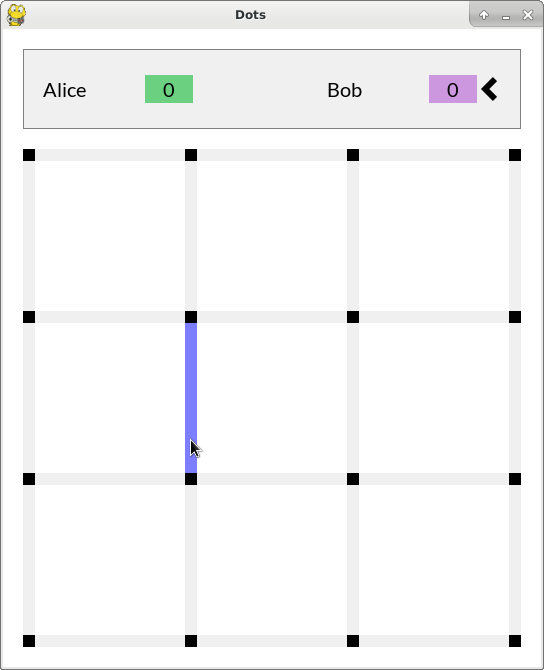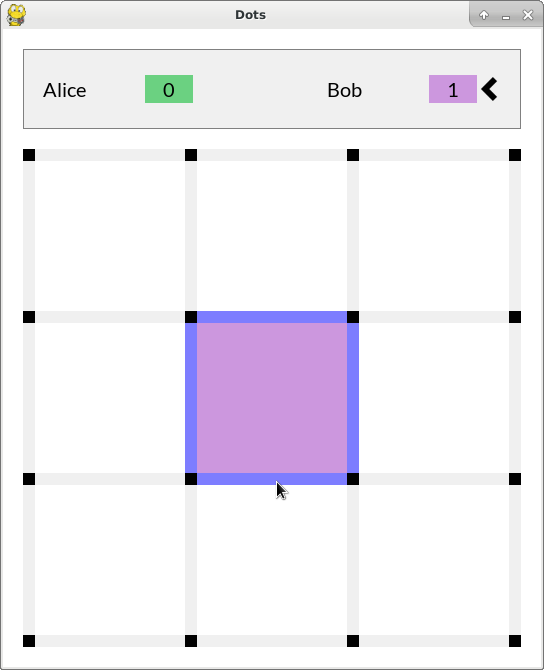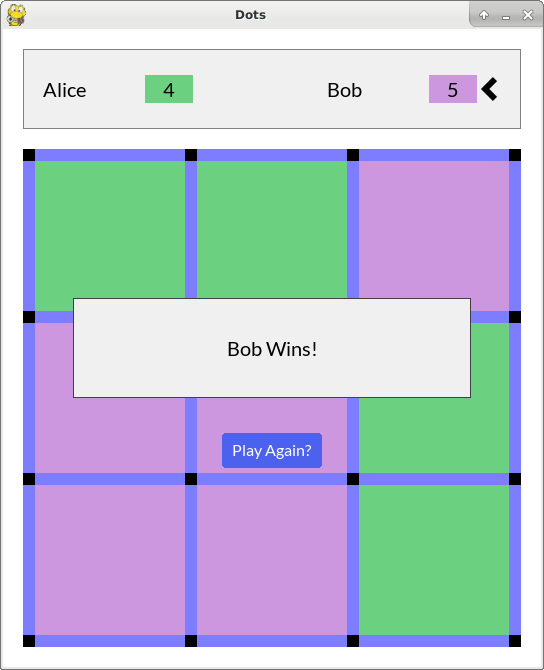Dots is an implementation of the classic game where you draw a bunch of dots on a piece of paper in a grid pattern and then players take turns connecting the dots. When a square, or cell, is made the player "captures" the cell. The player with the greatest number of captured cells at the end of the game wins.
Dots has always been a favorite game of mine and when I decided I wanted to learn a little bit about game programming, I figured Dots would be a good place to start. Dots is simple enough that I figured I wouldn't get bogged down in the details of the game during implementation, but complex enough that making the game would give me a nice little taste of game programming. Since Python is my go-to language I figured Pygame would be a good place to start.
There are just two requirements for running Dots:
- Python 3.7.7 or greater (https://www.python.org/downloads/)
- Pygame 2.0.0 or greater (https://www.pygame.org/)
During development I use Python virtual environments to isolate the Python version and packages I need. Feel free to use whatever you are comfortable with.
Dots is executed from the command line. Below is the usage documentation when starting with the -h or --help option.
$ python dots.py -h
usage: dots.py [-h] [-r ROWS] [-c COLUMNS] [-w CELL_WIDTH] [-t CELL_HEIGHT] [-p [PLAYER ...]]
A pygame implementation of the classic game of trying to capture as many cells as you can by connecting the dots.
optional arguments:
-h, --help show this help message and exit
-r ROWS number of rows of cells (default: 4)
-c COLUMNS number of columns of cells (default: 4)
-w CELL_WIDTH width of cells (default: 100 pixels)
-t CELL_HEIGHT height of cells (default: 100 pixels)
-p [PLAYER ...] names of the two to four players (default: Alice Bob)
As you can see, there are default values for all options so simply executing dots.py will run the game for you.
When you first start the game, the game board will look something similar to this:
The left pointing arrow indicates whose turn it is to connect two dots. To connect two dots, simply move your mouse over an edge between two dots. As you hover over an edge, the edge will be outlined to highlight the edge as shown below:
Click on the edge to join the two dots. Once you click on the edge it will be permanently colored in indicating the dots are now joined. Clicking on an edge that already connects two dots has no effect. After connecting two dots, it becomes the next player's turn. You will see the left pointing arrow now points at the next player.
Players continue alternating connecting dots until a cell is captured by connecting all of the dots that make up the cell. If connecting two dots captures a cell, the cell's background color changes to the color of the player that captured the cell. The player's score also updates when a cell is captured. Additionally, the player that captured the cell gets to connect another two dots. As long as the player continues capturing cells, it remains their turn.
Continue with game play until all of the cells have been captured and a winner is determined. At the end of the game, you will have the option to start a new game. Click the "Play Again?" button to start a new game.
I hope you enjoy playing the game!




